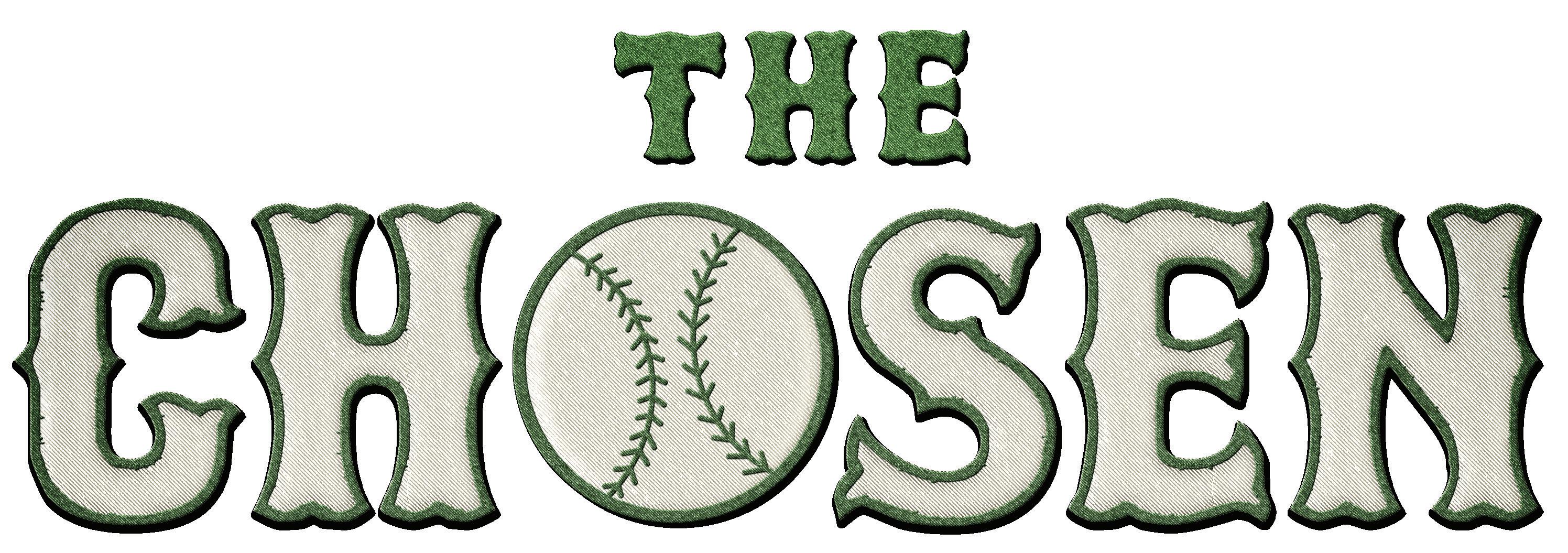



MARCH 5 – MARCH 31, 2024 | QUADRACCI POWERHOUSE www.MilwaukeeRep.com | 414-224-9490
Adapted by Aaron Posner & Chaim Potok
From the Novel by Chaim Potok
Directed by Aaron Posner
Presented by the Milwaukee Jewish Federation
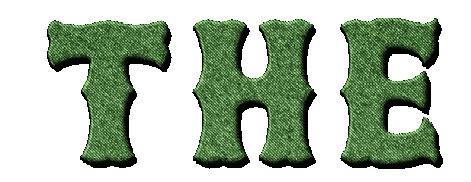


2 The Chosen – PlayGuide Mark Clements ARTISTIC DIRECTOR Chad Bauman EXECUTIVE DIRECTOR PLAYGUIDE WRITTEN BY Lindsey Hoel-Neds CONTENT WRITER PLAYGUIDE EDITED BY Deanie Vallone LITERARY & NEW PLAY CONSULTANT Lisa Fulton CHIEF MARKETING OFFICER MARCH 5 – MARCH 31, 2024 | QUADRACCI POWERHOUSE Associate Producers Suzy B. Ettinger Foundation • Idy Goodman • Abbie & David Nash • RA Stevens Foundation Executive Producers Beverly & Tony Petullo About the Play / Characters.........................................................3 History of The Chosen.................................................................4 About Chaim Potok and Aaron Posner..........................................5 Hebrew and Yiddish Terminology in the Play.................................6 Historical Context Historical Allusions..............................................................................8-9 Williamsburg, Brooklyn in the 1940s and Jewish Settlement in the Neighborhood..................................................8 Patriotism During WWII and Jewish Americans........................................9 Hasidic and Conservative Jewish Traditions: A Brief Intro............10 The Role of Baseball as the “All-American” Sport.......................12 Danny and Reuven’s Reading List / Suggestions for Further Learning...............................................13 Presented by the Milwaukee Jewish Federation TABLE OF CONTENTS Adapted from the Novel by Chaim Potok By Aaron Posner & Chaim Potok Directed by Aaron Posner
The Chosen is a coming-of-age story of two unlikely friends growing up in Williamsburg, Brooklyn in the 1940s. Danny Saunders is the heir apparent to the spiritual leadership of a Hasidic community, while Reuven Malter is the son of a Jewish intellectual who hopes his son will someday be a professor. The boys meet on the baseball field and take an instant dislike to each other. A sports-related injury that sees Reuven in the hospital at Danny’s hand serves as the catalyst for their first unexpected connection.
Reuven and Danny go quickly from enemies to cautious friends to close confidants. As they forge this burgeoning connection,
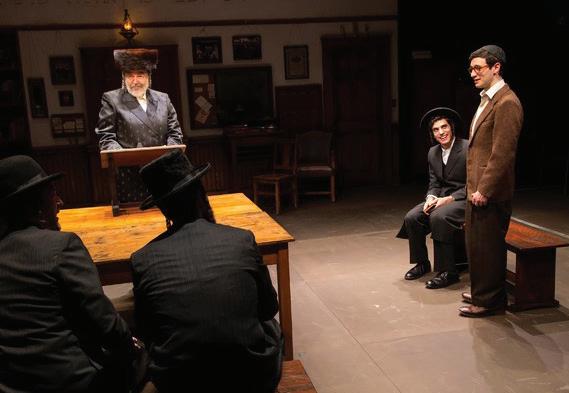
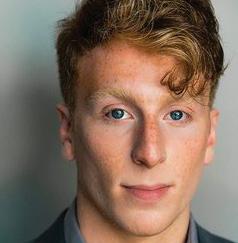

ABOUT THE PLAY CHARACTERS
Reuven
Malter (Eli Mayer)
The narrator and one of the protagonists of the play, a teen boy who is intelligent, athletic, and talented in the study of math and the Talmud. He attends a Conservative Jewish school and follows the traditions of that sect of the faith. Son to Mr. Malter.
Mr. David Malter (Steve Routman)
An educated man who focuses on examining his faith and its teachings with a critical eye, leading him to be an activist for several causes. He has a strong and open relationship with his son, even as Reuven follows a different path than what he had hoped.
their communities, cultures, and fathers have a powerful impact on their lives and friendship. The play explores their relationship and their hopes to defy the expectations placed on them. Alongside this coming-of-age story, these Jewish American families grapple with the atrocities faced by Jews in Europe during World War II, the aftermath of the genocide, the growing Zionist movement, and the establishment of Israel.
Since the novel’s publication over fifty years ago and the stage adaptation’s twenty-five year history, this story has moved readers and audience members with its examination of friendship, culture, family, and connection.
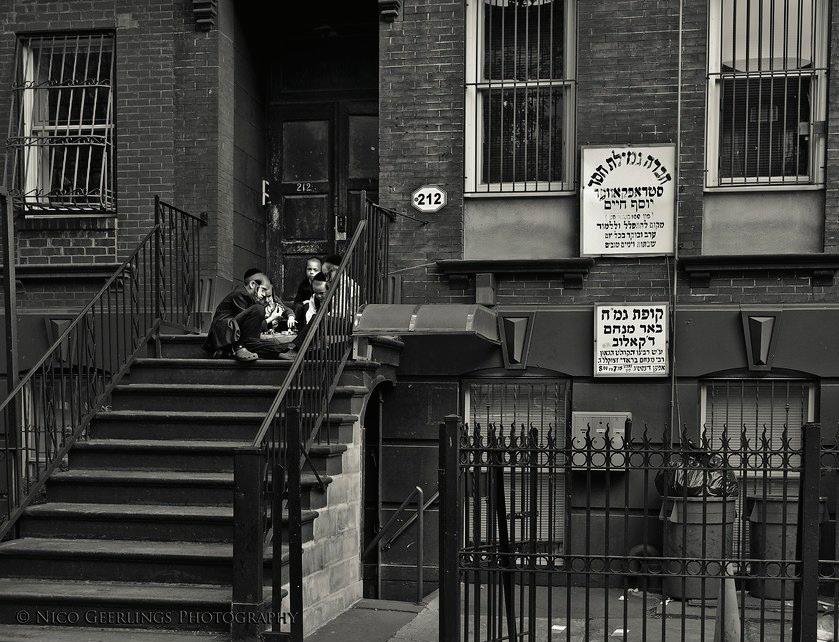


Danny Saunders (Hillel Rosenshine)
The other protagonist of the play, a teen boy who is the heir apparent to the leadership of his Hasidic Jewish community. He is not just talented in his faith-based studies, but loves secular literature and is fascinated by the study of psychology. Son to Rabbi Saunders.
Rebbe Isaac Saunders (Ron Orbach)
The spiritual leader of a Hasidic community in Brooklyn. Focused on his important role in the community and his son’s future leadership, he struggles to connect with his son outside of their studies.
www.MilwaukeeRep.com 3
Jewish Quarter, Williamsburg South Side, 1940s. Photo credit: Nico
Geerlings.
Max
in The Chosen at Long Wharf Theatre, 2017.
credit: Stu On Broadway.
George Guidall, Ben Edelman, and
Wolkowitz
Photo
HISTORY OF THE CHOSEN
The Chosen began its life in the city of Jerusalem, as author Chaim Potok worked on his PhD dissertation. He wrote academic research part of the time, and the fictional story of two Jewish boys growing up in 1940s Brooklyn the rest of the time. When Potok returned stateside, his novel returned with him and his family. The book was a bestseller when it was published in 1967, received great critical praise, and led Potok’s authorial star to rise. A feature film based on the book was released in 1981.
One feature to note that was changed in the film, and also in Posner and Potok’s play, is the faith tradition of Reuven’s family. In the book, both of the boys come from Orthodox backgrounds, Danny being Hasidic and Reuven following a more Modern Orthodox tradition. In the film and the play, Danny is still Hasidic, but Reuven’s family has been changed to adherents of a Conservative Jewish tradition, much like Potok himself evolved in his faith going from an Orthodox upbringing to becoming a Conservative rabbi.

In 1988, The Chosen was adapted as an Off-Broadway musical that did not last long on the boards. When Potok decided to adapt the novel for the stage, he looked to playwright Aaron Posner to co-write the script. The play was published in 1999, and has seen many productions over the past 25 years, capturing the essence and spirit of the original text.
This production has the distinct honor of not only having frequent Milwaukee Rep contributor Posner as the co-playwright, but also as the director.

4 The Chosen – PlayGuide
Early edition of The Chosen. Photo credit: Between The Covers.
Ethan Miller and Jacob Pelzman-Kern in The Chosen at 1st Stage, 2023. Photo credit: Ryan Miller Photography.


ABOUT CHAIM POTOK AND AARON POSNER

Chaim Potok (born Herman Harold Potok) was born in 1929 in Brooklyn, NY. He was the son of Polish immigrants and was raised in a Jewish Orthodox home. His mother had Hasidic roots and his father was a Hasid, so he had experience with the cultures he represents in many of his works such as The Chosen. As a teenager, Potok decided to become a writer and like Danny in the play, spent a large amount of his time reading many of the “great works” of the English literary canon.
During this time he became interested in less restrictive Jewish doctrines, specifically the Conservative movement. After attending Yeshiva University and obtaining his degree in English Literature, he attended the Jewish Theological Seminary of America and was ordained a Conservative rabbi. He served as a combat chaplain in Korea, taught at several Jewish colleges, and served as an editor of several Jewish publications. He also received his Ph.D. in Philosophy from the University of Pennsylvania.
Potok’s first published novel was The Chosen in 1967, the first book from a major publisher to portray Orthodox Judaism in the United States. The book met critical acclaim and became a commercial success. Potok followed it with a sequel, The Promise, that picks up a year after The Chosen left off with Danny and Reuven’s stories. His next series followed a young Hasidic artist as he struggles with family and community: My Name is Asher Lev and The Gift of Asher Lev, published in 1972 and 1990, respectively.
Potok continued to examine the conflicts between secular and religious interests in many of his later works, and he continued to write for the rest of his life. He lived in Israel for several years, continued to teach, dabbled in art, and advocated for various causes of importance to Jewish people.
Potok died of cancer at his home in Philadelphia in 2002.
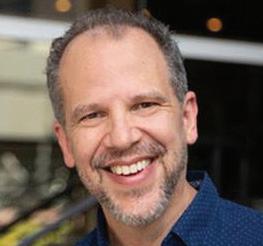
Aaron Posner has strong Midwestern ties, as he was born in Madison, but raised in Eugene, Oregon and then later attended Northwestern University in Illinois. While he now calls Washington, D.C. home, he is a frequent Milwaukee Rep favorite playwright and director, and has been a part of the Milwaukee Rep family for years.
Posner has made a prolific career in regional theater, directing across the country and seeing his plays produced hundreds of times, both here and abroad. A skilled adapter, most of Posner’s plays are based on novels, novellas, short stories, or plays. He not only adapted The Chosen with author Chaim Potok, but also wrote a stage adaptation of My Name is Asher Lev. Perhaps his most well-known play, Stupid F*cking Bird, is a reimagining of Chekov’s The Seagull, and was one of the most-produced plays in the country in 2015.
Posner has received critical acclaim for his work, winning numerous awards and accolades during his long career. Milwaukee Rep is proud to welcome Posner back to the director’s chair with this masterful adaptation of this classic story.

www.MilwaukeeRep.com 5
Photo of Chaim Potok in his home, 1990. Photo credit: Associated Press
Chaim Potok (left) discusses the film adaptation of The Chosen
Photo credit: Jeremy Kagan.
HEBREW AND YIDDISH TERMINOLOGY IN THE PLAY
Hebrew vs. Yiddish: Hebrew is the language spoken in Israel, the language that the Torah (Bible) is written in, and a holy language for Jews. Yiddish is a language that was used by Jewish people in central and eastern Europe before the Holocaust. It was originally a German dialect with words from Hebrew and several modern languages and is today spoken mainly in the US, Israel, and Russia.
Shul: [Yiddish] synagogue / Jewish house of prayer
"Ayloo ve’ayloo deevray eloheem chai’eem": [Hebrew] “These and these are the words of the living God.” [a quote from the Talmud, which infers that everything has multiple interpretations]
Yeshiva: [Hebrew] A school for Jewish scholarship
Goyim: [Yiddish and Hebrew] Non-Jews
Payos: [Yiddish] Side curls that Orthodox Jewish men let grow on the sides of their faces. This is a commandment from the Torah (Bible).
Tzitzit: [Hebrew] A fringed garment that Orthodox Jewish men wear under their clothes as a reminder of the 613 commandments, necessary to lead an observant Jewish life
Pischers: [Yiddish] A young, inexperienced person
"Gedank, talmidem, far vemen un far voss mir shpielen!": [Yiddish] “Remember, students, for what and for whom you play!”
Tuchus: [Yiddish] Butt
Apikorus / Apikorsim: [Hebrew] A heretic or Jew who doesn’t follow Jewish law or doesn’t believe in Judaism
Schmendricks: [Yiddish] A stupid person, a sad sack

Farshtukene: [Yiddish] Slang for stinking, rotting, terrible
Abba: [Hebrew] father
Tzaddik: [Hebrew and Yiddish] The spiritual leader of a Hasidic community, a righteous person
Shabbos: [Yiddish] The sabbath, the seventh day of rest in the Jewish week; Shabbat in Hebrew
Gematriya: [Hebrew] An ancient system of numerology developed by practitioners of Kabbalah, or Jewish mysticism
Chai: [Hebrew] Life
Nozuf: [Hebrew] A reprimand, reprimanded by God
"Tatte. Wilst un glasseletea?": [Yiddish] “Father, would you like a glass of tea?”
"Ich bin zayer su frieden, tatte, az hir hut zikh bekent mit mayn fraynt Reuven": [Yiddish] “I’m glad you met my friend Reuven, father.”
"Gut nacht, tatte.": [Yiddish] “Goodnight, Father.”
Momzer: [Yiddish] Child of a union not sanctioned by biblical law as interpreted by the rabbis
Ribbono Shel Oylom: [Yiddish] Yiddish vernacular for God, “Master of the Universe.”
6 The Chosen – PlayGuide

Baruch hashem: [Hebrew] “Blessed be God,” used in everyday speech to convey gratefulness for life’s gifts
Eretz Yisroel: [Hebrew and Yiddish] Land of Israel
Goyishkeit: [Yiddish] Acting non-Jewish
"Dos leben is schver": [Yiddish] “Life is hard.”
"Es lacht zich alain, un es vaint zich alain": [Yiddish] “One laughs alone and weeps alone.”
"Klop zich nicht dine kop in vant": [Yiddish] “Don’t beat your head against a wall.”
Olov hasholom: [Yiddish - derived from Hebrew phrase alav hashalom] An expression used after referencing a person who is passed away - “Peace be upon him.”
Mein hertz: [Yiddish] “My heart”
Other Terminology in the Play
Related to Judaism
Reb: [Yiddish] rabbi (Jewish clergy), informal
Hasidic: A sect of Judaism founded in Poland in the 18th century. There are many different Hasidic groups. They emphasize strict observance of Jewish law, mysticism, prayer, and joy.
Rabbinical: Related to a rabbi, i.e. Rabbinical school, where one studies to become a rabbi
Talmud: A compilation of Jewish laws and rabbinic teachings, written over 600 years (1st century CE through the 7th century CE). Includes two separate texts, the Mishnah (laws) and Gemara (explanations of the laws and rabbinic discussions). The Talmud is studied in Yeshivas.
Kippah/Yarmulke: A brimless hat traditionally worn by Jewish men as a reminder that God is above us.
Yoma: A specific tractate (volume) of the Talmud
Sanhedrin: A specific tractate (volume) of the Talmud
Raba/Rav: A rabbi from the time of the Talmud
Amalek: An enemy nation in the Bible. They chased after the Israelites as they left Egypt and attacked the old, the women, the sick, and the children. The Bible tells Jews never to forget what Amalek did to the Jews.
Mishnah: The section of the Talmud dealing with Jewish laws. Compiled in 600 CE.
Devorim: The fifth book of the Bible: Deuteronomy
World-to-come: Heaven / what comes after death
Synagogue: A Jewish house of prayer
Kosher: [Hebrew and Yiddish] Allowed to be eaten based on Biblical dietary laws. Also used to mean acceptable.
“My wife has been chosen for me.” Some Orthodox Jews meet through a matchmaker. The man and woman must agree to the match in order for the marriage to take place. Sometimes a boy and girl are promised to one another when they are young, but they need to still be willing when they are adults for the wedding to take place.
Passover [in Hebrew: Pesach]: An annual spring holiday celebrated by the Jewish people to commemorate the miracle of the Exodus from slavery in Egypt. Passover holds great importance to the foundational themes of Judaism, including freedom, redemption, and the covenant with God.
Esav: Esau. Brother of Jacob. A person in the book of Genesis who threatened to kill his brother.
www.MilwaukeeRep.com 7
HISTORICAL CONTEXT:
Williamsburg, Brooklyn in the 1940s and Jewish Settlement in the Neighborhood
After early immigration of German Jews, the Williamsburg neighborhood was flooded by the immigration waves of the early 1900s, making Williamsburg one of the most densely populated and poorest neighborhoods in the country. After the building of the Williamsburg (Brooklyn) Bridge in 1903, many families moved to Brooklyn to escape the difficult conditions in Manhattan’s Lower East Side. In the 1920s and 1930s, the Williamsburg neighborhood of the Brooklyn borough was one of the largest Jewish communities in New York City and was centered mainly around Orthodox or Conservative Jewish faith and culture. This orthodoxy attracted the Hasidim to settle there once groups arrived from Eastern Europe in the 1930s through the post-World War II period. There was tension between the various Jewish sects (as is seen in The Chosen) as many Hasidic leaders and adults were afraid of the influence the other Jewish traditions and secular culture might have on their adherents.

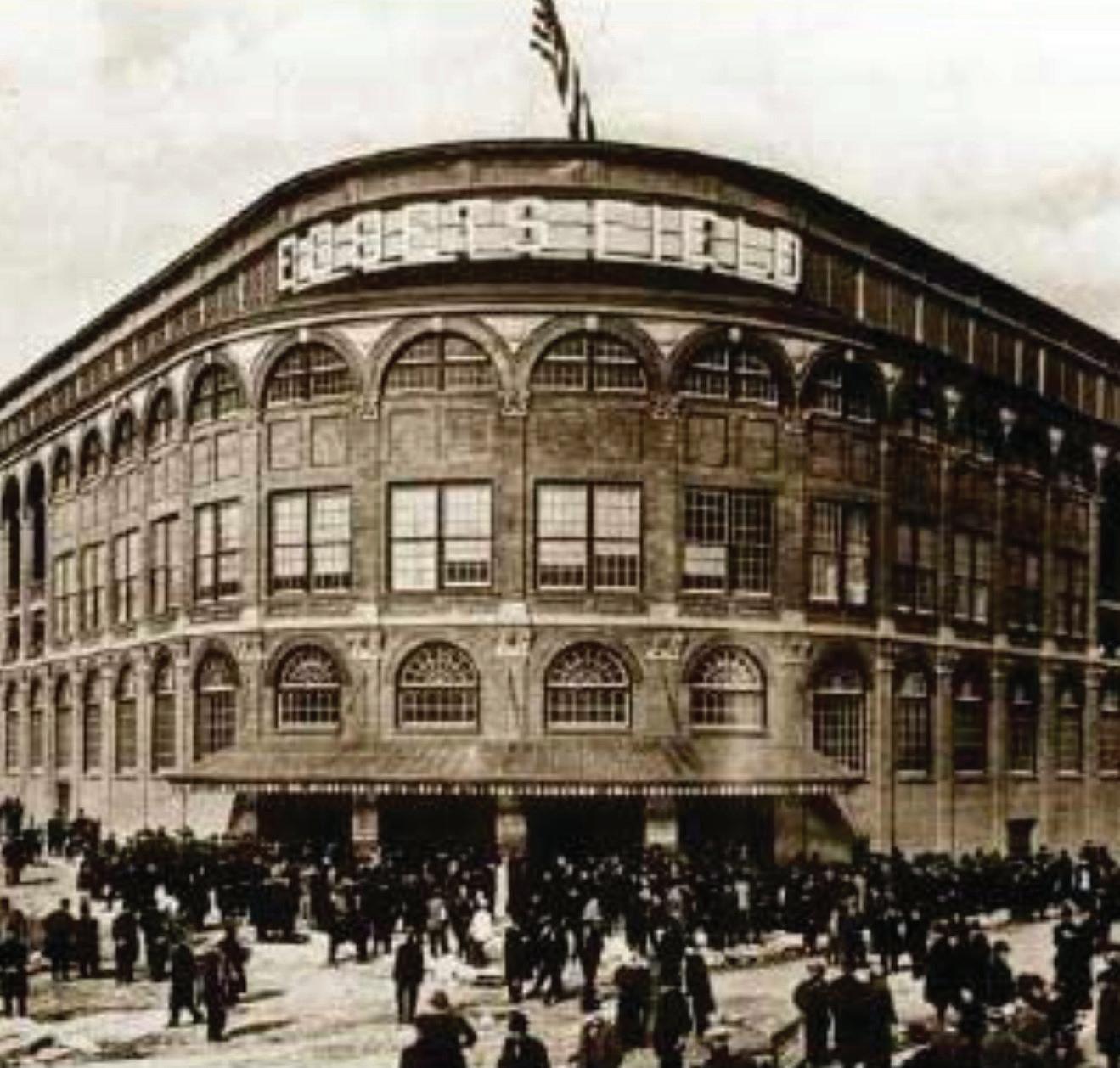
Historical Allusions in the Play
Theodor Herzl: The founder of modern Zionism, lived in Europe 1860-1904
Chaim Weizman: The first president of the modern State of Israel
Cossacks: A group of Slavic Christian people from Ukraine and Southern Russia, known in the Jewish community for Pogroms (organized riots) where they attacked entire Jewish communities

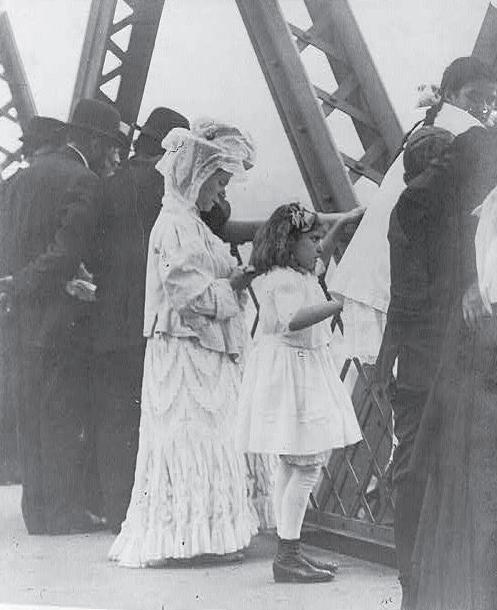
According to Professor of History and author Nathaniel Deutsch:
At the same time, the Satmar [Hasidim] became very notorious for being profoundly anti-Zionist at a time when Zionism was increasing in popularity among American Jews. So they were distanced from other Jews in the US in that regard, too. So there’s a variety of reasons why they end up becoming distanced, and they see it as a way of protecting themselves and their community from negative influences. And ironically or not, the most negative influences arguably were from other Jews, in their mind, not from non-Jews.
After World War II, more Hasidic immigrants arrived to the Williamsburg community, eventually dominating the Jewish population in the neighborhood. Other Jewish people left the community for other parts of Brooklyn and the demographics of Williamsburg changed over the years, with various ethnic groups joining the Hasidim in the neighborhood.
School of Hillel: Hillel was one of the rabbis quoted in the Talmud. When he disagreed with Shammai, the law usually followed Hillel, so his approach is called the School or House of Hillel.
School of Shammai: Shammai was one of the rabbis quoted in the Talmud. When he disagreed with Hillel, the law usually followed Hillel, so his approach is called the School or House of Shammai.
“Never Again”: Slogan after the Holocaust, that there should never again be a genocide
8 The Chosen – PlayGuide
Left: Early photo of the Williamsburg Bridge, which opened in 1903. Photo credit: Hadassah Magazine. Right: Jewish families praying on the Williamsburg Bridge, 1909. Photo credit: Library of Congress.
Background: Ebbets Field in Flatbush, Brooklyn, 1913. Photo credit: Wikipedia.
Locals outside a Williamsburg barbershop. Photo credit: Brooklyn Public Library.
Patriotism During WWII and Jewish Americans
During World War II, showing one’s patriotism on the homefront was a vital part of American culture. The pressure to show your distinct “Americanness” was especially important for certain ethnic and racial minorities. Jewish Americans were no exception. While many other countries were quick to fight Hitler’s regime and also join the war in the Pacific, the U.S. was a latecomer to the fray, only declaring war after the bombing of Pearl Harbor in late 1941. Regardless of the late entry to World War II, Americans were expected to do their part to support the war effort with enthusiasm and sacrifice.
Americans on the homefront showed their patriotism in various ways: rubber and scrap metal drives, fundraising events, buying war bonds, patriotic programs, rolling bandages, “victory gardens,” serving in the Air Warning Service, and many other initiatives. Rationing and scarcity made life hard. As so many men were serving in the Armed Forces, women went to work across many industries, many of them being new to working outside the home. One in five families had someone serving in the Armed Forces and hundreds of thousands of those families experienced the grief of losing a loved one in the war. Service on the homefront was considered an essential part of the war effort. Over sixteen million Americans served in the war, but millions more served here at home.
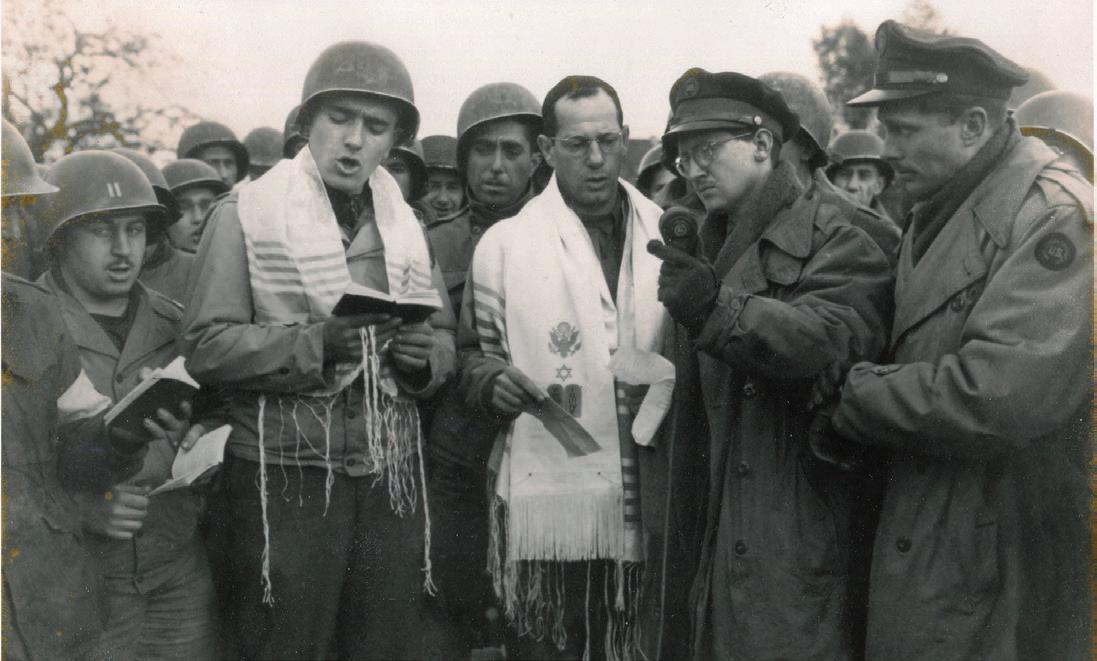

Jewish National Fund: A non-profit organization founded in 1901 to buy and develop land in Israel in order to help establish a modern Jewish state
The Haganah: Military defense organization for the Jewish community from 1920-1948
The Irgun: A right-wing underground movement founded in 1931. They advocated using force, if necessary, to establish a Jewish State in Israel. It was disbanded after 1948.
May 14, 1948: The date Israel was declared a Modern State and the beginning of the War of Independence
During the early part of the 20th century, Jewish immigrant populations grew rapidly due to circumstances in Europe. These new Americans were not only enthusiastic to show their patriotism as Americans but also to prove their “Americanness” in the face of growing anti-semitism. Jewish Americans faced antisemitism from various factions within American life, from politicians to business owners to Christian leaders to American Nazi groups.
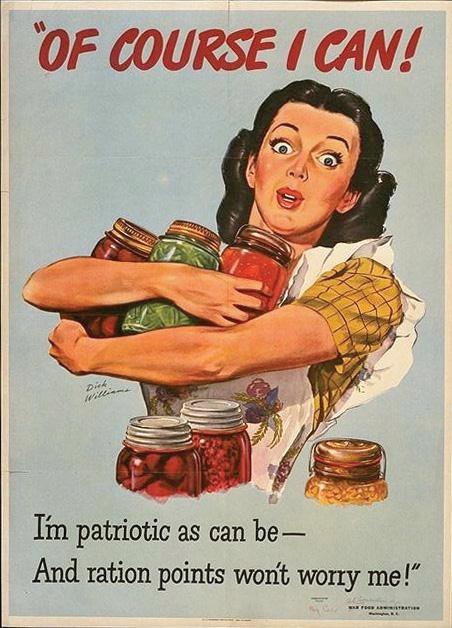
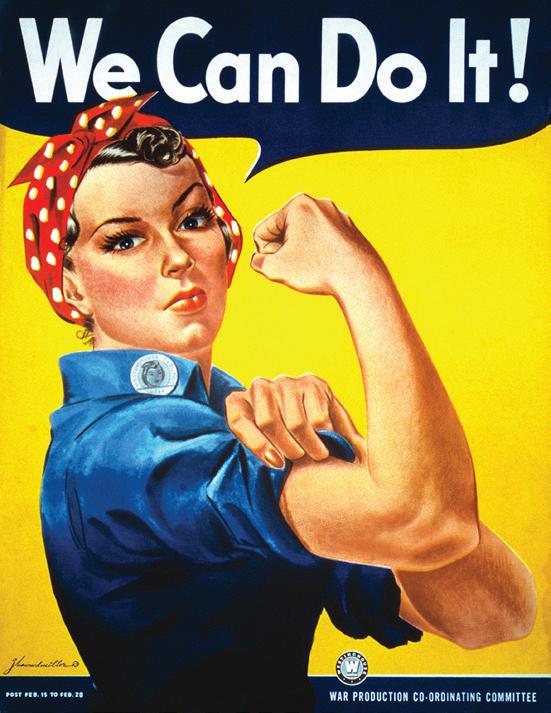
While Jewish Americans were facing waves of antisemitism at home, the looming terror of Nazi rule in Europe became a pivotal issue. In the 1930s, the U.S. was a fairly isolationist country, as was evidenced by the government's hesitation to fight the growing Nazi power abroad. While many Americans, including some important political figures, thought the war in Europe should not be America’s problem, Jewish Americans pushed for U.S. intervention to halt Hitler’s growing power. Once the U.S. entered the war, Jewish Americans answered the rallying call for troops. Over 550,000 Jewish Americans served in World War II, with many of them having a more personal stake in Europe’s liberation with family still in occupied areas.
Reflections from a woman reminiscing about that time in a Washington Post interview might encapsulate the era best: "The patriotism was so strong. We lived to defeat [the enemy], to make the world right. . . . It was everything."
UN Resolution: On Nov. 29, 1947, the UN passed Resolution 181, calling for Jewish and Arab states side by side in what is today the Modern State of Israel.
Ben Gurion: First prime minister of the State of Israel
The Holocaust*: The systematic genocide of over six million Jewish people (2/3 of Europe’s Jewish population) by Hitler’s Nazi regime and its collaborators. The Holocaust was an evolving process that took place between 1933 and 1945.
www.MilwaukeeRep.com 9
a “victory garden” in New York City. Photo credit: 6sqft.com.
Background: Children work in
*While The Holocaust is a key world event during this time and in the play, the brevity of this PlayGuide cannot do justice to the enormity of the horrors of The Holocaust with the reverence it deserves. To learn more, please visit teachholocaust.org.
Rationing propaganda poster. Image credit: National Park Service.
Rosie the Riveter poster. Image credit: Department of Defense.
Max Fuchs (second from left in prayer shawl) stands next to Rabbi Chaplain Sidney Lefkowitz. He is singing in Aachen, Germany during the first Jewish service to be held on German soil since the rise of Hitler, which was broadcast on NBC on Oct. 29, 1944. Photo courtesy Max Fuchs.
HASIDIC & CONSERVATIVE
In the play, Danny and Reb Saunders’ family follow Hasidic Jewish traditions; Reuven and Mr. Malter follow more Conservative Jewish traditions. While these traditions are complex and cannot be fully delineated in these short pages, an introduction to each tradition may help to better explain the cultural divides in the play a bit better.
Hasidic Judaism
The Hasidic movement emerged in Eastern Europe in the 18th century and is an Orthodox branch of the Jewish faith. The movement drew heavily on Jewish mysticism and focused on a direct connection with God under the spiritual guidance of a Rebbe or tzaddik (like Reb Saunders). At the height of the movement in the 19th century over half of Eastern European Jews were Hasidic. Hasidic Jews faced persecution and many of them immigrated to escape the pogroms and other antisemitic and discriminatory practices. The Holocaust decimated the Hasidic population, but dozens of sects exist today primarily in Israel and New York.
Hasidic practices are unique and often Hasidic sects are fairly insular, with communities being centralized in particular locales. Some practices that are unique to the Hasidic culture:
• Rebbes: Each Hasidic sect has a Rebbe and he is a central figure of the community. Succession of the position usually falls to his son or a close male relative. He is seen as not only a spiritual leader, but also an exceptionally righteous person who is consulted for both personal and religious matters.
• Clothing: Clothing amongst Hasidic groups varies slightly, but many include black outerwear and white shirts for men, and highnecked and long-sleeved dresses for women. In certain sects, men wear specific headwear: for example, Chabad men wear a fedora-like hat, in other groups men wear a fur-trimmed hat.

• Language: Most Hasidic groups still use Yiddish as their primary language.
• Hairstyles: Married women cover their hair, some with kerchiefs, some with wigs. Men wear beards and in certain sects, payos, or forelocks.
• Life Choices as Spiritual Choices: Hasidic groups believe in the importance of living their lives according to particular ways of love and service. While study of religious texts is still a part of their faith, the emphasis is on each adherent’s direct relationship with God, with the Rebbe as an important conduit for that connection.
• Adherence to Jewish Laws and Observances: Jewish laws such as keeping kosher and other guidance are central to Hasidic life.
10 The Chosen – PlayGuide
Hasidic Rebbe Aharon Rokeach (depicted 1934), who was hidden from the Nazis and smuggled out of Europe. Photo credit: Wikipedia.
JEWISH TRADITIONS: A BRIEF INTRO
Conservative Judaism
The Conservative movement is one of the three largest denominations of Judaism in the U.S. It has historically occupied a sort of middle ground between Reform Judaism and Orthodox Judaism. During the mid-20th century, such as in the time of the play, Conservative Judaism was the dominant type of Judaism in America. At the end of the century, the movement had seen rapid decline. Conservative Judaism posits that Jewish law is binding, but that there is more room for interpretation than Orthodoxy allows.
• Variety of Religious Practices: The Conservative sect allows for various religious practices in its effort to embrace pluralism.
• Gender Issues: During the time of the play, men and women would have been seated together during services, but only men were allowed to serve as rabbis. These practices have evolved since the 1940s.
• Keeping Kosher: Conservative Jewish families would have followed kosher laws, but possibly less strictly than Hasidic families.
• Commitment to Jewish Law and Modernity: Conservative Judaism is defined by its official commitment to Jewish law, but over the years, they have made concessions to better align with modern sensibilities.

• Matrilineal Descent: Recognition of Jewish descent is through the mother’s lineage only.
• Scholarship of Jewish Texts: The movement accepts critical secular scholarship of the seminal texts of the Jewish faith. The study of and importance of the Torah is a central tenet of Conservative Judaism.
• Klal Israel: Commitment to the worldwide community of Jewish people and that all Jews have “ultimate significance.”
www.MilwaukeeRep.com 11
A prayer service for the success of American soldiers on D-Day, June 6, 1944. Mostly women attended – able-bodied men were at the front. Photo credit: Library of Congress.
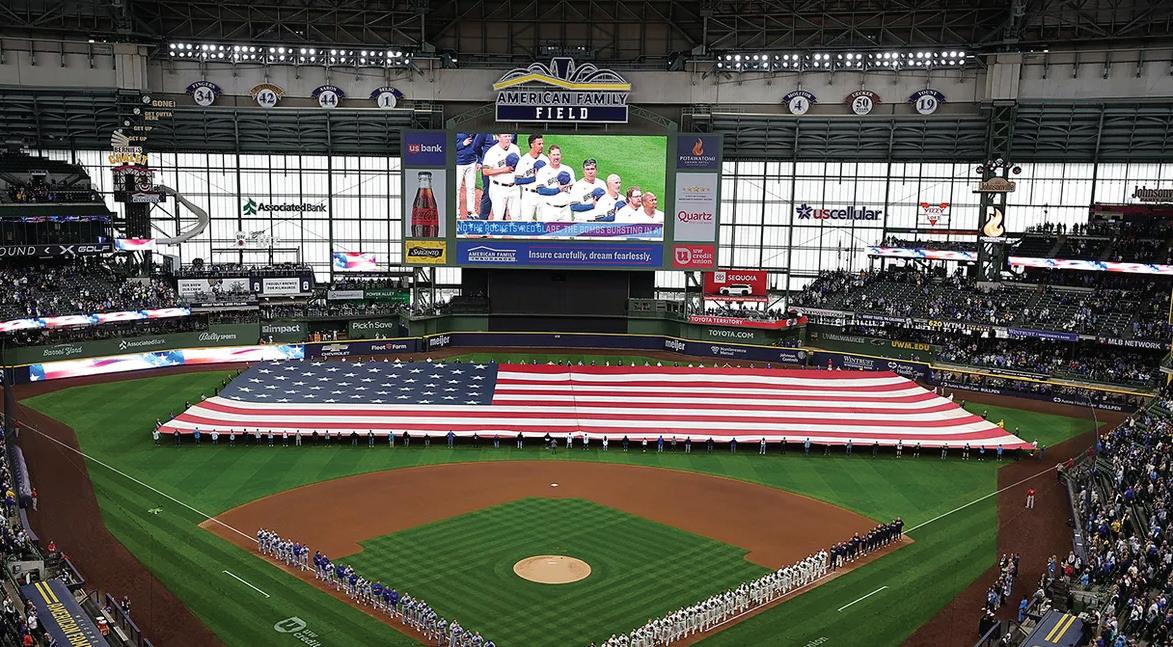
THE ROLE OF BASEBALL AS THE "ALL-AMERICAN" SPORT
While football is the most popular spectator sport in the country, the second place sport is the one that is most closely associated with American identity: baseball. But why? At the outset of The Chosen, Danny and Reuven and their respective schoolmates are playing a sport that seeks to prove their “Americanness.” How did baseball become synonymous with America?

Perhaps why baseball is America’s “National Pastime” cannot be explained by mere facts or history, but by a cultural ethos that has made the sport beloved for almost two centuries. Some thoughts on the All-American sport:
“While other sports were enjoyed by many, the sport of baseball became a sport that unified all people. It became a common ground for the ethnically and religiously diverse people of America. Everyone could enjoy baseball. No matter who they were, where they came from, or what they believed in, everyone could enjoy watching, playing, and talking about baseball.”
- Frank Fleming, sports writer
"Baseball, because of its continuity over the space of America and the time of America, is a place where memory gathers."
- Donald Hall, poet
“I think there are only three things America will be known for 2,000 years from now . . . the Constitution, jazz music, and baseball.”
- Gerald Early, writer
“Well — it’s our game; that’s the chief fact in connection with it; America’s game; it has the snap, go, fling of the American atmosphere; it belongs as much to our institutions; fits into them as significantly as our Constitution’s laws; is just as important in the sum total of our historic life.”
- Walt Whitman, writer

"Whoever wants to know the heart and mind of America had better learn baseball."
- Jacques Barzun, historian
“
. . . And they’ll watch the game, and it’ll be as if they dipped themselves in magic waters. The memories will be so thick they’ll have to brush them away from their faces. People will come, Ray. The one constant through all the years, Ray, has been baseball. America has rolled by like an army of steamrollers. It’s been erased like a blackboard, rebuilt, and erased again. But baseball has marked the time. This field, this game, is a part of our past, Ray. It reminds us of all that once was good, and that could be again.”
- Terence Mann (James Earl Jones), Field of Dreams
“Baseball connects us: Generation to generation, fan to fan and rival to rival.”
- National Baseball Hall of Fame
"Baseball is a meeting ground for all hyphenated Americans, be it African-Americans, Jewish-Americans, Latin-Americans . . .”
- Rachel Lithgow, American Jewish Historical Society
"Nothing in our daily life offers more of the comfort of continuity, the generational connection of belonging to a vast and complicated American family, the powerful sense of home, the freedom from time's constraints, and the great gift of accumulated memory than does our National Pastime."
- Ken Burns, filmmaker

12 The Chosen – PlayGuide
A Young Men’s Hebrew Association Baseball Team in St. Louis, 1930.
credit: American
Society.
Photo
Jewish Historical
WWI in
, 1918.
Propaganda from
the Saturday Evening Post
credit: NHD.org.
Photo
Sheet music for “Take Me Out to the Ball Game,” 1908.
National anthem and American flag at American Family Field, 2023. Photo credit: Fox.
Photo credit: Library of Congress
DANNY AND REUVEN’S READING LIST
Ivanhoe: A Romance by Sir Walter Scott (1819)
The Brothers Karamazov by Fyodor Dostoyoevsky (1880)
Ernest Hemingway
Leo Tolstoy
Sigmund Freud
Charles Darwin
Principia Mathematica by Alfred North Whitehead and Bertrand Russell (1910)
Do You Have A Thirst for Knowledge Like Danny and Reuven? A Few Suggestions to Keep You Exploring:
To view:
• G.I. Jews: Jewish Americans in World War II (PBS)
• The Jewish Americans (PBS)
• The U.S. and the Holocaust (PBS)
• Baseball (PBS)
• A Life Apart: Hasidim in America (PBS)
To read:
• Chaim Potok novels about Danny and Reuven: The Chosen, The Promise
• Wisconsin Jewish Chronicle: https://www.jewishchronicle.org/
• Holocaust Education Map, a toolkit of the Nathan and Esther Pelz Holocaust Education Resource Center, teachholocaust.org
• One People, Many Paths: A History of Jewish Milwaukee by John Gurda
• Jewish Literacy: The Most Important Things to Know About the Jewish Religion, Its People and Its History by Rabbi Joseph Telushkin
• Exodus by Leon Uris
• Israel: A Concise History of a Nation Reborn by Daniel Gordis
• Yiddish Civilization: The Rise and Fall of a Forgotten Nation by Paul Kriwaczek
• The Story of the Jews by Simon Schama
• Baseball and American Culture: A History by John P. Rossi



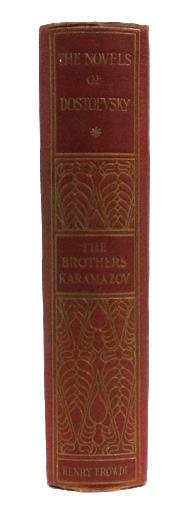



To listen:
• Unorthodox Podcast
• The Jewish History Podcast - with Rabbi Yaakov Wolbe
• Jewish History Nerds Podcast
• People of the Pod Podcast
• Chutzpod! https://chutzpod.com/
To visit:
• Jewish Museum Milwaukee: https://jewishmuseummilwaukee.org/ (1360 N Prospect Avenue)
• The Nathan and Esther Pelz Holocaust Education Resource Center (Online resources and in-person programs available): https://holocaustcentermilwaukee.org/
• The Milwaukee Jewish Federation: https://www.milwaukeejewish.org/
• Yad Vashem, The World Holocaust Memorial Center: https://www.yadvashem.org/
• The United States Holocaust Memorial Museum: https://www.ushmm.org/
• Museum of Jewish Heritage: A Living Memorial to the Holocaust https://mjhnyc.org/
• The iCenter: https://theicenter.org/
• National Baseball Hall of Fame: www.baseballhall.org
• The Secret History of Jews in Baseball: https://www. vox.com/2014/10/2/6877671/the-secret-history-ofjews-in-baseball
• Baseball Americana at the Library of Congress: https://www.loc.gov/exhibitions/baseball-americana/ about-this-exhibition/#explore-the-exhibit
www.MilwaukeeRep.com 13
Milwaukee Repertory Theater is located in the Associated Bank Theater Center which is part of the Associated Bank River Center downtown at the corner of Wells and Water Streets. The building was formerly the home of the Electric Railway and Light Company.
VISITING THE REP
The Ticket Office is visible on the left upon entering the Wells Street doors. The Quadracci Powerhouse is located on the Mezzanine and can be accessed via escalator or elevator.
Milwaukee Repertory Theater’s Patty and Jay Baker Theater Complex is located in the Milwaukee Center downtown at the corner of Wells and Water Streets. The building was formerly the home of the Electric Railway and Light Company.
The Ticket O ce is visible on the left upon entering the Wells Street doors. The Quadracci Powerhouse is located on the rst level.
THE REP VALUES YOUR SUPPORT
Financial support enables The Rep to:
Advance the art of theater with productions that inspire individuals and create community dialogue.
✯ Advance the art of theater with productions that inspire individuals and create community dialogue;
✯ Provide a richer theater experience by hosting Rep-in-Depth, TalkBacks, and creating PlayGuides to better inform our audiences about our productions;
Provide a richer theater experience by hosting Rep-in-Depth, TalkBacks and creating PlayGuides to better inform our audiences about our productions.
Maintain our commitment to audiences with special needs through our Access Services that include American Sign Language interpreted productions, captioned theater, infrared listening systems and script synopses to ensure that theater at Milwaukee Rep is accessible to all.
✯ Educate over 21,000 students at 150+ schools in the greater Milwaukee area with Rep Immersion Day experiences, student matinees, workshops, tours and by making connections with their school curriculum through classroom programs such as Reading Residencies;
✯ Maintain our commitment to audiences with special needs through our Access Services that include American Sign Language interpreted productions, captioned theater, infrared listening systems and script synopses to ensure that theater at The Rep is accessible to all;
Educate over 20,000 students at 200+ schools in the greater Milwaukee area with Rep Immersion Day experiences, student matinees, workshops, tours and by making connections with their school curriculum through classroom programs such as Reading Residencies.
✯ Educate the next generation of theater professionals with our EPR Program which gives newly degreed artists a chance to hone their skills at The Rep as they begin to pursue their theatrical careers.
We value our supporters and partnerships and hope that you will help us to expand the ways Milwaukee Rep has a positive impact on theater and on our Milwaukee community.
Educate the next generation of theater professionals with our EPR Program which gives newly degreed artists a chance to hone their skills at Milwaukee Rep as they begin to pursue their theatrical careers. We value our supporters and partnerships and hope that you will help us to expand the ways Milwaukee Rep has a positive impact on theater and on our Milwaukee community.
Donations can be made on our website at www.MilwaukeeRep.com or by phone at 414-290-5376.
THE REP RECEIVES SUPPORT FROM:
The Lynde and Harry Bradley Foundation
The Richard & Ethel Herzfeld Foundation
The Shubert Foundation
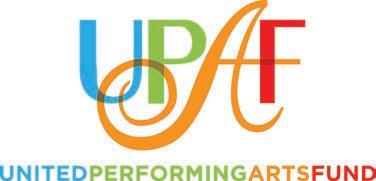

ENABLES MILWAUKEE
TO: Donations can be made on our website at
or by phone at 4 1 4-290-5376
RECEIVES SUPPORT FROM:
VISITING MILWAUKEE REP FINANCIAL SUPPORT
REP
www.MilwaukeeRep.com
MILWAUKEE REP
The Lynde and Harry Bradley Foundation The Richard & Ethel Herzfeld Foundation













































